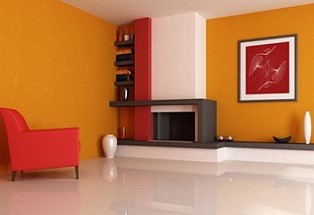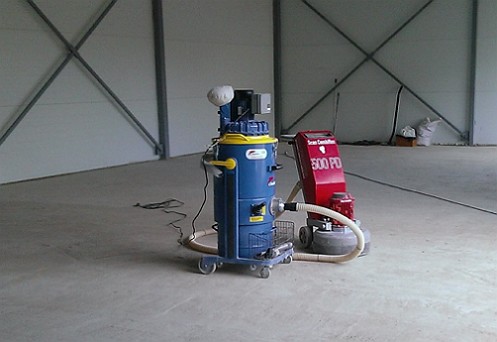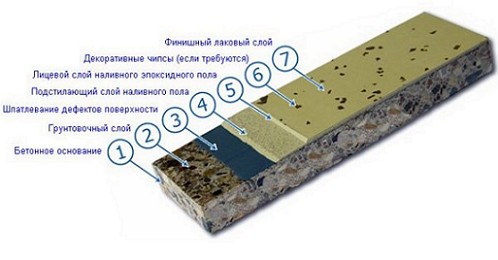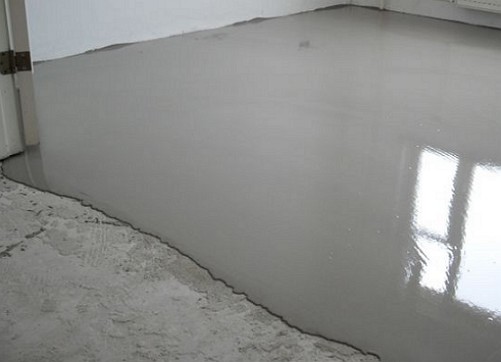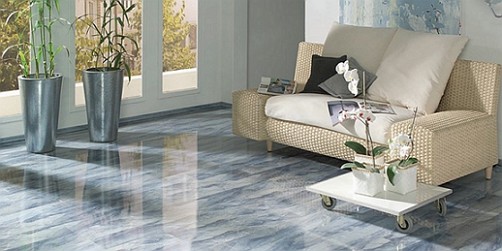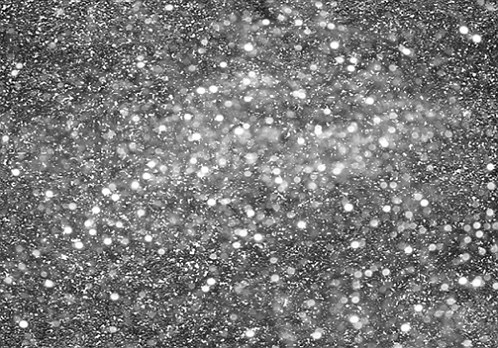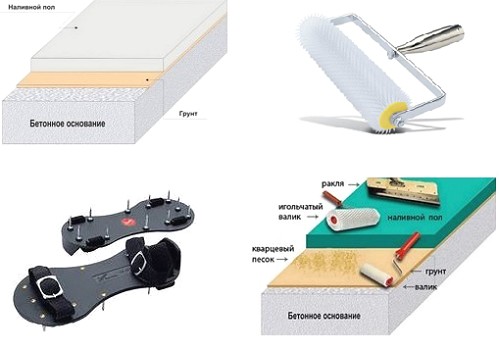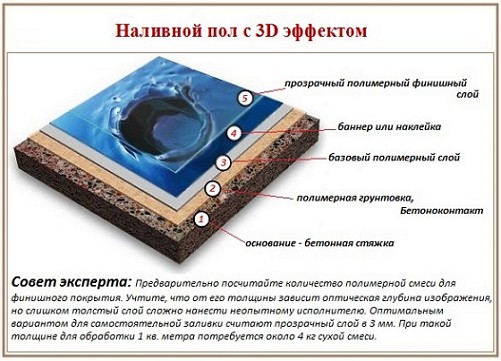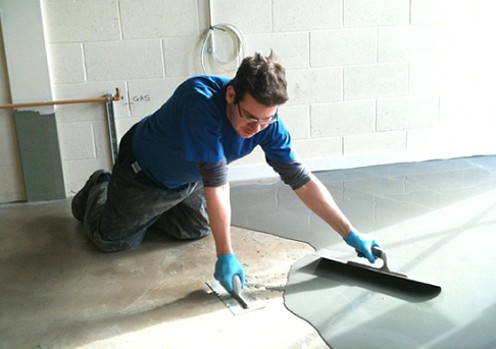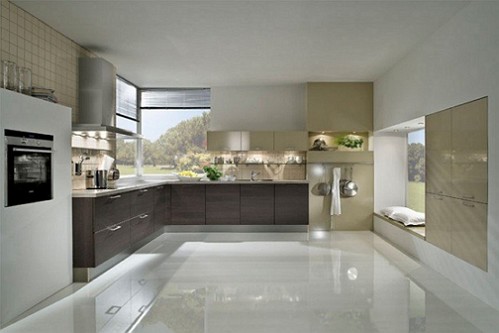The intent of the device of the epoxy self-leveling floor itself should be supported by the use of dry mixtures, the composition of which is carefully calculated and tested by the manufacturers. Naturally, the usefulness of creating a floor and the ease of preparing a working solution with subsequent application will be based on the characteristics of the mixture and the presentation of the technology.
Content
What is an epoxy filler floor?
It is known that the bulk floor technology is used to construct a decorative coating of a concrete substrate. Such a floor is suitable for industrial or administrative premises with high humidity and intensive daily load.
In terms of their technical characteristics, the epoxy floors are superior to concrete screeds with compressive strength and hardening of the quality of the existing base subjected to loads.
technology of creation and component composition
The creation of a self-leveling floor on an epoxy basis supports the "filling" technology from a two-component polymer composition followed by polymerization: epoxy resin ( component A) and curing agent ( component B). Exaggerated, the bulk floor can be represented as a two-, three-layer horizon from a mixture whose main function is damping.
features of the coating and scope
Among the features and advantages of the device of epoxy self-leveling floors are:
• attractive glossy appearance of the coating after the polymerization process
• Improved performance (chemical resistance and abrasion resistance)
• harmlessness of the component composition during curing
• possibility of applying layers of different thicknesses
• No odor when applied.
Let's say that the field of application of the filler floor in the apartment is confirmed by the practice of creating a smooth, vapor-permeable, tinted finish coat, with the device and hardening of thin-layer paint floors and a highly filled leveling base.
coating thickness and material consumption
The thickness of the epoxy floor coating depends on the purpose of the room, and the expected loads. We will show that the minimum thickness is up to 2 mm, the maximum thickness is up to 5 mm. Justified thickness of the coating is considered from 2.0 to 2.5 mm. By the way, increasing the thickness of the coating is not a guarantee of creating super qualities.
characteristics of epoxy self-leveling floors
The main characteristics of epoxy floor are:
• Strength limit for bending 7 N / mm2 and compression 25-35 N / mm2
• Strength of adhesion to a wet concrete surface (7 days)
• The thickness of the layer is 20-35 mm at a material consumption of 18 kg / cm2
• Possibility to use the floor after 7 days after application of the mixture
• Low abrasion and good moisture resistance.
The finished solution is applied (poured) and distributed over the surface using a special rack. The consumption of the material is: filler floor - 1,3-1,5 kg / sq. M. Per 1 sq. M, surface coloring - 0,2 kg / sq. M.
Helpful Tips
Useful advice is to comply with the formula for mixing components declared by the manufacturer of epoxy self-leveling floors and material consumption.
For example, to create a chemically resistant thin-layer epoxy coating with a thickness of 2.5 mm and depending on the absorbent state of the substrate after the mandatory priming, the consumption of the packaging material: (component A-20 kg, component B-4 kg), the consumption of material mixed in mass ratio A : B = 5: 1 will be 0.4-0.8 kg / m3.
How to create a self-leveling epoxy floor
The technology of creating the floor must be provided with a smooth working base so that the process of pouring the mixture was made during the activity of the prepared solution (20-40 min).
The technology of the bulk epoxy floor consists of the stages:
• preparation of a smooth surface by machine or manual grinding and priming of the base
• preparation of the working solution by connecting the components in the required proportion
• the creation of a base layer from the solution and its complete drying
• creation of the final decorative coating.
The created base layer of a bulk epoxy floor, ideally, should have ductility and good adhesion to the concrete base.
Useful tips from the masters, how to make a fill of epoxy floor, are shown here.
After that, you can confidently proceed with the creation of the finish coating, in case you plan to install epoxy liquid 3d floors.
bulk epoxy 3D floors
The creation of the newfangled 3d floor is a more labor-intensive process, which will include measures for decorating the filled epoxy flooring for the elements: flocks, glitters and chips.
The decor in the form of a flock coating - monochrome and fluorescent flocks, sparkles glitter is a ready-made dry mixture consisting of acrylic particles of different shapes and sizes. Decor is applied manually, relying solely on your own imagination or the sample seen bulk 3D floor.
Reviews of the bulk epoxy field
Anton Igorevich, private country house
"Initially, liquid floors were developed exclusively for" large gubas "prompomescheny. The simplicity and speed of the application technology convinced us that it was practical. So I ventured to create a bulk floor in one of the rooms located on the ground floor of the cottage with a concrete covering.
Manufacturers recommend to arrange a floor, when the moisture of the screed does not exceed 4%. Measured humidity - 5,2%. It was consulted at the specialists, it was suggested to pour quartz sand before filling the two-component epoxy compound Epilast, suitable for the treatment of concrete bases with residual moisture. And he did it: before full filling of the pores, he passed epoxy primer Epolast-Grunt with a material consumption of 250 g / m 2. For a year after pouring. Problems do not arise. "


